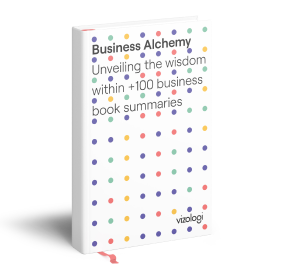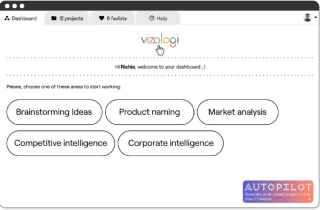Business Model Innovation For Associations: How AI And AMS Tools Shape The Future
Associations are under growing pressure to modernize their operations, diversify revenue streams, and deliver more personalized value to members. Artificial intelligence (AI) and association management software (AMS) are emerging as the dual engines driving this transformation.
By blending automation, analytics, and predictive capabilities with robust member management tools, associations are not only streamlining workflows but also reinventing their entire business models. The following sections explore how trade association management software, AI-powered engagement strategies, and open platform ecosystems are reshaping the future of associations.
Trade Association Management Software: Foundation For AI-Enabled Innovation
At the heart of modern associations lies trade association management software (a specialized form of AMS). This is not just a digital ledger of members, but the operational backbone that links membership administration, dues billing, events, communications, certification, committees, and more. Modern AMS platforms—such as Fonteva, MemberClicks, iMIS, WildApricot, GrowthZone, Nimble AMS, Glue Up—provide varying modules for data, workflows, finance, and integrations.
While legacy AMS systems mainly automated routine processes and replaced spreadsheets, the new generation is becoming platforms with embedded intelligence. Leading AMS vendors now integrate predictive analytics, engagement scoring, automated reminders, and dashboards that anticipate member behaviors. For instance, Glue Up touts real-time dashboards, predictive renewal modeling, and campaign automation as standard features.
But simply embedding AI features is not enough. The real innovation happens when associations re-think their business models around the capabilities that AI + AMS unlock.
From Dues-Driven To Value + Insight ? Hybrid Revenue Architecture
Traditional associations often rely heavily on membership dues as their primary or sole revenue stream. AI and advanced AMS tools enable expanding into new revenue layers:
- Tiered / usage-based subscriptions: With analytics, associations can monitor how much individual members engage (events attended, content consumed). High-usage members might pay more, or receive premium features.
- Recommendation commerce / micro-upselling: Using AI recommendation engines, associations can cross-sell training, certifications, publications, event add-ons or white-label tools tailored to each member’s profile. Nimble AMS explicitly points to boosting non-dues revenue via recommendation AI.
- Data / benchmarking services: Aggregated, anonymized data from many member organizations can become a product: peer benchmarking, industry trends, dashboards. These insights may be sold or made part of a premium offering.
- Pay-per-use access or “a la carte” services: For small nonprofits or associations reluctant to commit to full membership, allow paying just for individual services (e.g. one-off training, consulting, access to reports).
- Sponsored value marketplaces: Within an AMS ecosystem, third-party providers (certification bodies, consultants, service vendors) can offer value-add services to members; associations can take a commission or revenue share.
Thus, AI + AMS tools enable a hybrid revenue architecture rather than a pure-dues model, giving associations more flexibility and resilience.
AI-Powered Member Lifecycle Innovation: Retention, Engagement & Experience
AI is reshaping how associations approach the member lifecycle, moving it away from a series of administrative checkpoints and toward a more dynamic, personalized journey. Instead of waiting for disengagement to become visible, predictive models now make it possible to detect early warning signs of churn.
Attendance patterns, login frequency, email engagement, and even committee activity can be analyzed in real time, giving associations a clearer picture of who is at risk and when intervention is needed. This proactive stance allows organizations to craft tailored outreach or incentives before a member quietly lapses.
The onboarding phase is equally transformed. Where once new members were guided through a uniform orientation process, AI-powered AMS platforms can now adapt introductions and resource pathways to reflect individual interests, job roles, and prior behavior. This adaptive approach reduces early drop-off while ensuring that members experience tangible value sooner.

Photo by Steve Johnson on Unsplash
Operating Efficiency & Cost Resilience Through Automation
AI, layered on top of AMS, creates opportunities to reinvent internal operations and achieve cost discipline while scaling.
- Workflow automation & intelligent routing: Tasks like renewal notices, invoice generation, event registration confirmations, membership verifications, reminders, and report preparation can be automated (and triggered by AI when anomalous).
- Smart anomaly detection & alerting: AI can monitor financials, expense patterns, or member/payment irregularities and flag deviations or fraud risk.
- Natural language generation for reports: Rather than months of manual report compilation, the system can auto-generate narrative summaries and insights (“Membership grew by 8% in region X; retention fell slightly in cohort Y”) ahead of board meetings.
- Data cleanup, deduplication, entity matching: One persistent challenge with association datasets is messy, duplicate, or outdated records. AI models help automate cleansing, merging, or linking of member records.
- Intelligent decision support: Executive dashboards may surface suggestions (“Consider re-pricing this tier,” “Member segment Z shows low engagement”) rather than only data tables.
- Lower dependence on specialized staff: With more automation and intelligent tools, smaller staffs can manage larger portfolios, reducing overhead per member.
Such operational efficiency allows associations to scale without a linear increase in overhead, especially important in volatile or lean funding environments.
Ecosystem & Platform Strategy: From AMS To Open Platforms
A critical evolution is moving from closed AMS silos to platform ecosystems, where the AMS becomes a hub or enabler rather than a monolith.
- Open APIs & modularity: Modern AMS platforms expose APIs allowing plug-in modules (learning management, CRM, marketing automation, grant management). Associations can pick and integrate best-of-breed services.
- Marketplace model: Vendors and service providers build modules or “apps” that extend the AMS—for analytics, certifications, compliance, tools. Associations may earn revenue by listing or promoting add-ons.
- Platform ecosystems: Rather than thinking “AMS versus niche tool,” the trend is toward a platform that integrates CRM, content, communities, financials, and third-party services. Wipfli’s commentary argues that “platforms, not AMS, are the future of association management,” with flexibility, scalability, and AI integration built-in.
- Federated / chapter-level deployments: For associations with chapters or local affiliates, the platform can allow federated autonomy while maintaining centralized oversight and data sharing.
- Interoperability & data layer orchestration: To avoid data silos, associations will invest in a semantic data layer or “business semantics centric” architectures, marrying context and AI agents (as proposed in research) to align data, models, and workflows.
With this platform mindset, the AMS becomes the innovation enabler for new services, third-party collaboration, and flexibility.

Photo by Jakub ?erdzicki on Unsplash
Wrapping Up
The integration of AI with AMS tools signals a fundamental shift in how associations operate and grow. From smarter revenue models and proactive member engagement to scalable automation and open platform strategies, these innovations extend far beyond efficiency gains—they create entirely new ways of delivering value.
Associations that embrace this evolution will be positioned to strengthen member loyalty, diversify income, and remain relevant in a rapidly changing environment. Those that delay risk falling behind as the sector moves decisively toward an AI-enabled future.

Vizologi is a revolutionary AI-generated business strategy tool that offers its users access to advanced features to create and refine start-up ideas quickly.
It generates limitless business ideas, gains insights on markets and competitors, and automates business plan creation.


